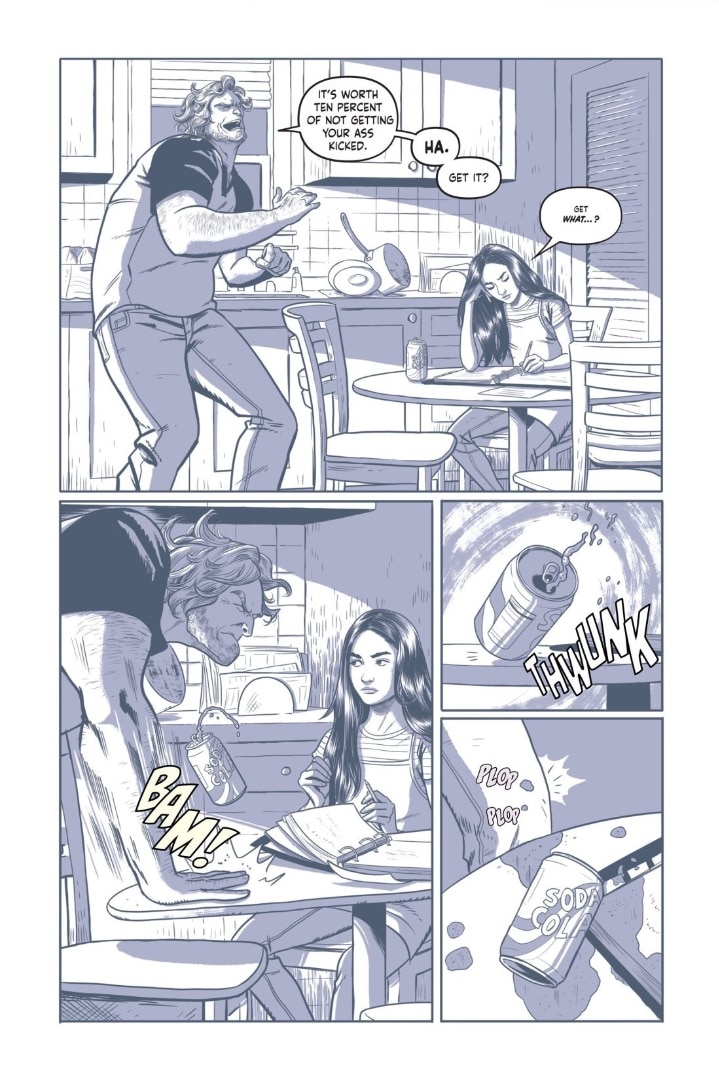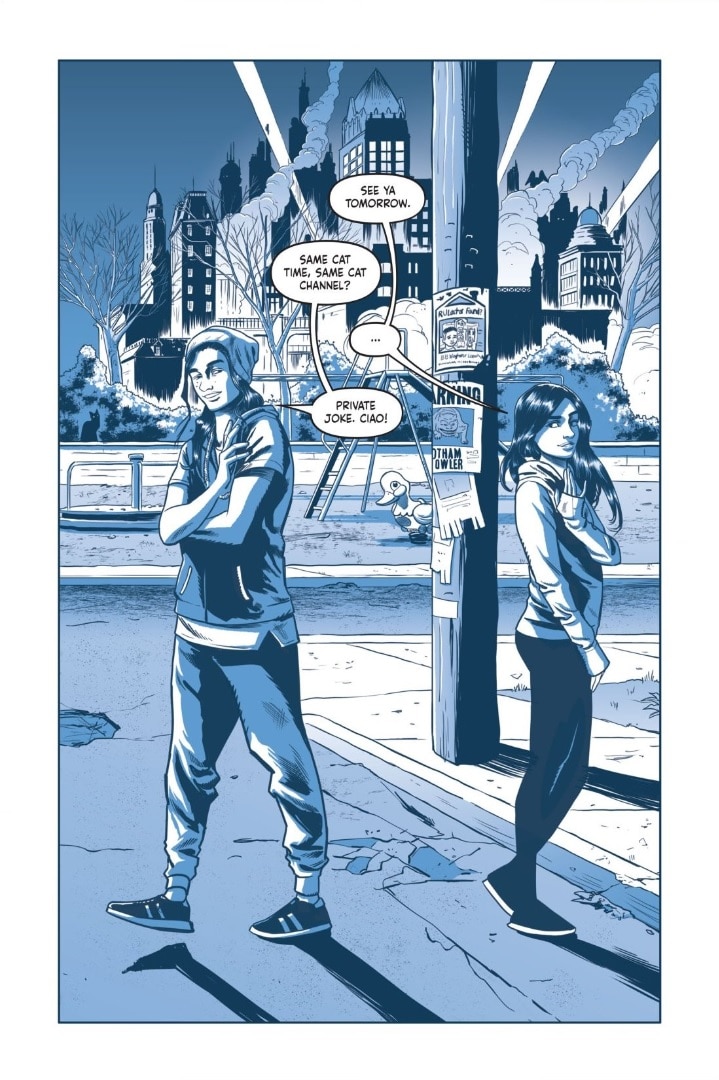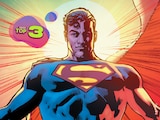Bestselling author Lauren Myracle has been tasked with reimagining one of the most iconic Bat-characters of all-time for Young Adult readers with her upcoming graphic novel Under the Moon: A Catwoman Tale. Forget what you think you know about Selina Kyle. This haunting new tale reimagines Catwoman’s origin and lets fans join Selina on the heartbreaking and hopeful journey that led to her life as one of Gotham’s most notorious residents. Recently, Myracle joined us for a wide-ranging discussion about making her first comic, loving Catwoman, and respecting young audiences enough to trust them to deal with the darker side of life.
Hey Lauren, thanks for talking with us for Ink Spots! What was it like to take on a timeless character like Selina? Especially as Under the Moon is your first ever comic.
Absolutely thrilling, and a career shock, and a career kind of, "Oh my gosh, really?" I'd been hearing these rumors of this line, and about these amazing writers that I admired getting tapped to write for DC. Then my agent called and said, "Hey, DC is wondering..." and my jaw dropped! My heart flip-flopped! It was kind of like a kid opening a present. It's not about status, it's about, "Oh my gosh, wow, I'm a girl who loves stories and here's a universe that's created stories that have infiltrated and permeated our entire culture. And I get to be a part of that? AMAZING!"
Actually, the first time they had me write a proposal they asked me about Poison Ivy. And I said to myself, "Who's Poison Ivy?" But I didn't say that out loud! I said, "Sure, Poison Ivy!" So, I went and did a little bit of research. But the people at DC that I talked to from the beginning were like, "Don't find out the mythology, don't research the character. The reason we're coming to you and to all these other authors is we want a fresh take."

But I had to find out who Poison Ivy was, so I did that and wrote the proposal. They read it, and either they hated it or they loved it enough to say, "Well, actually, we want to give you somebody else. How about Selina Kyle?" And I was like, "Oh, I'm soooo on board because I don't know any girl—maybe there are a few out there—who doesn't fall into the spell of Selina Kyle with her feline grace."
When I was a teenager, I definitely felt more connected to the characters who didn't put it all out there. As an adult, I've learned to drop those filters for myself. I'm unapologetically happy and optimistic—I want to hug the whole world. But as a teenager, I was much more entranced by the dark eyeliner and the cast down eyes, the allure of mystery, and that's what Selena is. So, I was thrilled, but then I started to get scared because this is a character that I have no business writing about. But you know, I took it very seriously and did my best, even though it felt scary and exciting.
As you were getting ready to write the story, was there anything about Selina that surprised you?
The notes that they gave me originally were that Selina Kyle is independent and she doesn't trust others. So, neither of those things surprised me, but they were a great starting point. They said one other thing: she makes decisions that are ethical based on her own morality. That's a nice way of saying she doesn't necessarily have a moral compass that aligns with conventional morality, but she still tries to act with good faith. I thought, "Alright, cool. So, this is a broken girl, a broken kid. How did she get there? How do I make her strong to her own values? Where did those values evolve from?"
So, that was a fun place to start!

The book, like some of your other titles, deals with some darker themes, including animal abuse and domestic violence. Why is it important for Young Adult books to deal with this sort of stuff?
In terms of thinking about young people, I was just in New York with my 14-year-old daughter. We were talking with my grandparents, so we had this whole intergenerational thing going on, and I asked her, "What's something that you think grownups don't understand about the existence of 14-year-olds?"
She thought about it and then she said, "You know, Mom, I don't think grownups think that our lives are real. I don't think they take our problems seriously."
I thought about that a lot. Even as hard as I'm trying to take kids seriously, I hear what she's saying. If she has a breakup, I think in my head, because I've had some perspective, "Oh, you'll be fine a month from now," and I just try to help her through it. But when you're in the middle as a 14-year-old, it's totally real. It's not less important; it's absolutely as vital, human and relevant as some CEO making a big business deal. Actually, it's probably more important.

So, with Selena, I had to think, "Okay, she's gonna end up on the street," because that was something else DC had mentioned to me, that they wanted her to end up on the streets with a family of street kids. So, what does it take to become a kid who gravitates toward other kids for their family?
I wrote a book called Shine that had to do with a hate crime against a young gay man. And I remember going to visit a safehouse for LGBTQ kids, and I met a boy there who was actually named Tristan, oddly enough, which is the name of the kid in the book. He told me that he'd been kicked out of his house by his parents for his sexuality and gender expression, and I thought, "Wow, parents really do that stuff. This is real life. This isn't just a story."
Then it came to me. Selina isn't going to be kicked out, she's going to leave on her own terms. But the same kind of trauma has to happen because you don't leave otherwise. You don't leave a safe place. So, that's where Dernell came from, that's where Gail—the mom who is loving, but not strong enough—came from. I think that Selina gets some of her strength to leave from seeing that her mother's strength is not enough. Her mother doesn't protect her and there are bad guys like Dernell that she needs protecting from. So, from then on, once she's out in the real world, she's going to be the right kind of mother figure to the kids that she meets, and goddammit, she's going to protect them!

As this is your first comic, what was the experience like making it? How was it collaborating with all of the different people that helped bring it together?
Oh my god! Well, in the middle of it I was just like, "Wow, I never want to do anything else!" This is the most fun because DC is amazing. With other editors, it might be two months, even six months before I get feedback on the draft. But with DC, it's two days! I'm into it! I'm partially thrilled and partially like, "Really, seriously, where's the break?"
It's a big collaboration with Isaac and it's also very much a collaboration with Bobbie and Diego , the editors. Every day it was this online water cooler conversation—and as a writer I work from home, I don't have much workplace contact—and that was wonderful.
Isaac was just so open to my suggestions, and Bobbie and Diego were the same. I think that when people all want to make something as good as it can be, then you do it. There's no ego involved. There's no, "Oh, let them do the work." Instead you're like, "Oh my gosh, yeah, you're so totally right." And so, Isaac would add things in that made me learn and see the characters totally differently. It was just exhilarating.

What was it like writing one of DC's strongest female characters? Especially as comics is often seen as a male-dominated world.
I do know that the comic book world is male-dominated. I know that our whole entire world is male-dominated, and oh my god, how much so! I wouldn't have written a story in which a woman's trauma colors in the blank of a man, you know? Where the woman has trauma and the man goes on to be a hero. No, never.
My goals were to transform her into the catlike antihero that she is, and then have her be completely independent. And a cat's such a great metaphor for her. Whereas, through the male gaze, cats might be slinky and sexy, what I saw was that cats land on their feet. Cats are independent, cats are predators as well as prey, and they have to adapt, and that actually works great for women too.
I left the male characters on the backburner. This was Selina's story! She had to have a beginning, middle and end. The middle was her transformation, and the end was coming out of it, shutting off her own pain and some of her old patterns, and being willing to march confidently into a future where she knows that she's capable of love.
Under the Moon: A Catwoman Tale by Lauren Myracle and Isaac Goodhart is now available in bookstores, comic shops and as a digital graphic novel.















